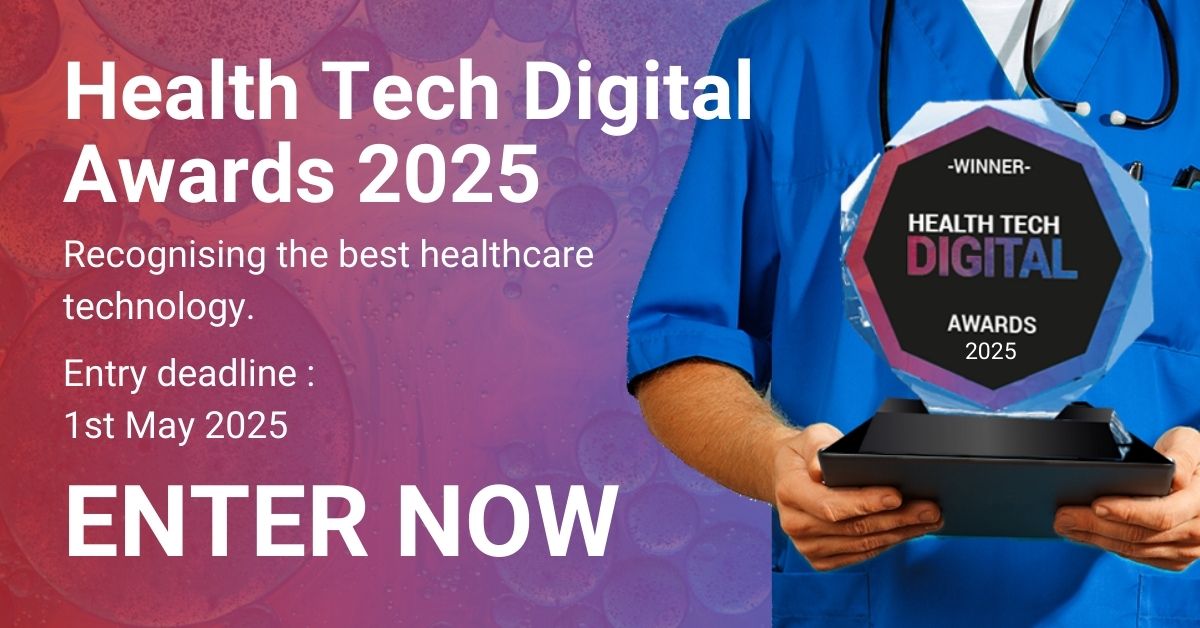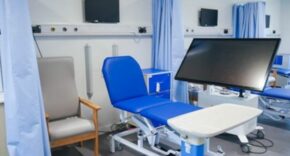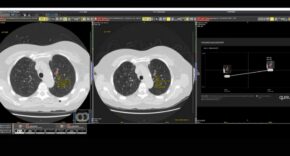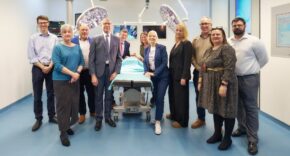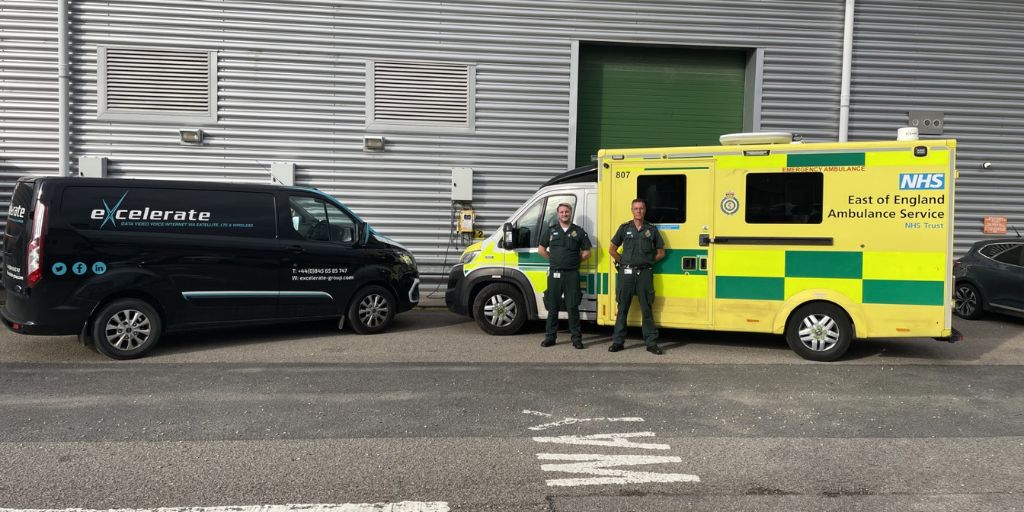
A significant and successful pilot study at the East of England Ambulance Service NHS Trust (EEAST) has proved that cost effective improvements in NHS connectivity are available now and can be implemented within days, leading to better quality and more flexible patient care, improved staff wellbeing and the potential delivery of a wider range of healthcare services by NHS providers.
Hybrid Connex – from UK emergency services connectivity specialist & systems integrator Excelerate Technology – was developed through a €5.7m European Space Agency-funded research and development programme featuring the latest technology that goes well beyond 4G limitations and into satellite territory, providing robust connectivity for ambulance crews and vehicles in areas where traditional cellular connectivity has been extremely challenged or impossible to achieve. It is also now being used in hospital emergency departments to bolster local connectivity.
The results of the pilot are particularly positive at a time when there is a lack of clarity about when the long-awaited Emergency Services Network (ESN) will come to fruition. The tangential Hybrid Connex technology can further support clinical connectivity within the UK ambulance sector since ESN is based solely on 4G technology, meaning the emergency services can benefit from the very latest technology today, not in the future or at some undefined date.
The successful trial at EEAST enabled paramedic crews to achieve almost permanent connectivity in areas where they previously had very little, or no internet connectivity at all. During the pilot, cellular connection was utilised in 88% of jobs attended in areas where previously the signal would not have been good enough to achieve a stable connection.
Connection availability was 93% during all jobs carried out in low or no coverage areas throughout the pilot and satellite was utilised in 47% of jobs in low or no coverage areas, which many times was bonded with the cellular to provide a faster internet connection for crews on board.
Complementing the next phase of the Ambulance Radio Programme (ARP) rollout (part of the ESN) this advanced level of permanent connectivity will:
- Open the door to new patient care pathways, taking advantage of digital advances.
- Increase the range of point-of-contact diagnostic services and tests that ambulance crews can carry out on-the-spot, without taking patients to hospital.
- Be better prepared and able to take advantage of developments in telemedicine and video technology.
- Ensure that crews can quickly and easily access immediate clinical information through electronic patient records.
- Enable crews to remain in constant contact with specialists about patients and their conditions while travelling to receiving hospitals.
- Enable crews to locate patients faster in areas where connectivity is compromised.
- Help crews find key information about local health and social care services at their fingertips, enabling them to signpost patients to more appropriate, alternative sources of health and care.
- Help fleet managers and financial managers within ambulance services handle the often-complex commercial aspects of connectivity – such as billing – in a much more efficient way.
Bethan Evans, chief operating officer at Excelerate says: “The Hybrid Connex technology bonds clever software, cutting-edge hardware and cellular and satellite services into one package combining seamless 4G, 5G and satellite connections that ensure ambulance crews get a fast, resilient connectivity solution and are seldom offline. The hardware is unobtrusive and the technical fit-out can be done in a day, meaning the vehicle doesn’t need to be off-line for long.
“Patients and staff are the ones who really benefit when strong connectivity enables better clinical technology at the frontline, with new ways of working too. Importantly we also started to see how this technology can support reductions in unnecessary conveyance to hospitals, something which is a key NHS priority.”
Tristan Wood, managing director and founder of Livewire Digital, developers of the RazorLink SD-WAN technology that’s deployed to bond all bearers into a true, hybrid connection, said: “The ability to have and maintain a robust, seamless connection, capable of managing all content including live video is becoming increasingly important across industries, not least in healthcare where minutes and even seconds are critical.
“The Hybrid Connex programme is groundbreaking in the sense that it’s connecting clinicians, paramedics and patients on the move with unparralelled resiliency. True hybrid connectivity, where all bearers including satellite, cellular, and Wi-Fi are bonded into one robust ‘pipe’ is the only way to support our patients now, and in the future.”
While it is true that satellite connectivity is not currently ‘the norm’ when it comes to emergency services communications, there can be no doubt that its inclusion into a single bonded solution – where it is called upon when cellular connectivity is unavailable – will have significant benefits for resilience, especially in a large-scale, mass casualty incident, where experience has proved that one of the first things to fail or become overloaded are cellular communications.
An always-on Wi-Fi bubble around the ambulance allows staff to connect to digital systems such as NHS Spine-connected services, giving them access to patient history and enabling them to identify alternative care pathways, make the right decisions for the patient and provide the opportunity for the best possible clinical outcomes.
- Four vehicles from EEAST had Hybrid Connex Technology installed. Apple iPads were configured to auto connect to the vehicles’ Wi-Fi bubbles, and this was 99% successful during the trial period.
- Crews operating in fleet not equipped with Hybrid Connex have reported being able to access the trial vehicles’ Wi-Fi bubbles when in proximity and therefore receive patient records.
- Where crews on the trial vehicles experienced stable high-speed Wi-Fi connection they were able to access data and information while responding to calls in areas of low or no cellular coverage.
- One paramedic who used the system stated: “There was very stable Wi-Fi in the middle of nowhere, achieving 150Mbps download. I conducted a Teams meeting in the passenger seat with excellent clarity and connection stability.”
EEAST was the first ambulance service to pilot the service which has already shown the benefit of a faster and more stable connection to digital systems even while the vehicle is on the move. In some cases that connection has been able to extend into patients’ homes, resulting in the ability for staff to make Wi-Fi calls in low and no cellular connectivity areas.
Philip Elvidge, electronic patient care records lead (paramedic) at EEAST worked on the trial and said: “When we lose connection, clinical apps stop being able to pull information from our CAD system, cease being able to pull information from our PDS trace to bring the patient’s NHS number into record and prevent us being able to upload information to our key partners. However, with Hybrid Connex we have been able to access the Summary Care Records and National Record Locator consistently, which gives staff access to patients’ End of Life and Mental Health Plans, giving access to key information any time of the day to help us make the right clinical decisions.
“As we move forward with the integration of digital technology to ambulance front line care, we have access to more information about our patients than ever before, but we need to be connected all of the time to take advantage of it. Paramedics need to know they can always have the same information available no matter where they attend to their patients. With Hybrid Connex in place, we are already seeing how a guaranteed connection improves our patient care, as we can download information about the patient and access their clinical records whenever needed. We are already starting to use new functionality like video calling to a stroke consultant in a specialist centre, for example.”
Monica France, programme manager for digital transformation at NHS Arden & GEM, a partner in the consortium delivering the programme, said: “Hybrid Connex is a dynamic project that we are really pleased to be involved in. Arden & GEM’s role is to support the relationship between NHS and industry. This will ensure that the delivery of efficient and effective patient care is at the forefront of the research.”
NHS organisations are encouraged to find out more, by visiting the Hybrid Connex online engagement portal https://www.hybridconnex.co.uk or emailing bethane@excelerate.info.

